Sharing a bond with clay: The magic of pottery
Pottery is more than just an art form; it's a journey that connects us to our past, our creativity, and each other. Imagine kneading soft, pliable clay in your hands, feeling its coolness and texture as you shape it into something beautiful. This ancient craft has the power to transform not only raw materials into art but also our emotions and relationships. It’s like a dance between the artist and the medium, where each twist and turn reveals a new layer of expression and connection.
The magic of pottery lies in its ability to forge bonds. Whether you're crafting a simple bowl or an intricate vase, you're participating in a tradition that spans thousands of years. From the earliest civilizations that used pottery for practical purposes to modern artists who see it as a canvas for self-expression, the significance of this craft is undeniable. It’s not just about making something; it's about creating a legacy that can be shared with others.
As you delve deeper into the world of pottery, you’ll discover that it’s not just an individual endeavor. Pottery studios and workshops are vibrant spaces where people come together to learn, share ideas, and inspire one another. These communal experiences often lead to lasting friendships, as the act of shaping clay fosters an environment of collaboration and creativity. It’s like a melting pot of personalities, all united by a common passion.
Moreover, pottery has therapeutic benefits that enhance our well-being. Engaging with clay can be a form of meditation, allowing us to escape the hustle and bustle of daily life. The repetitive motions of molding and shaping can help clear the mind, reduce stress, and promote mindfulness. It’s a tactile experience that grounds us, reminding us to be present in the moment. In a world that often feels chaotic, pottery offers a sanctuary where we can reconnect with ourselves and our surroundings.
So, whether you're a seasoned potter or a curious beginner, the world of pottery invites you to explore its depths. It’s a journey filled with discovery, connection, and creativity. As you share your creations with others, you’ll find that pottery has a unique way of bringing people together, creating bonds that transcend time and space. So grab some clay, roll up your sleeves, and dive into the enchanting world of pottery!
- What is pottery? Pottery is the art of shaping and firing clay to create functional or decorative objects.
- What are the different types of pottery? The main types include earthenware, stoneware, and porcelain, each with unique properties.
- Can pottery be therapeutic? Yes, working with clay can reduce stress and enhance mindfulness, making it a therapeutic activity.
- How can I get started with pottery? You can start by taking a class at a local pottery studio or purchasing a beginner’s pottery kit.
- Is pottery a social activity? Absolutely! Pottery classes and workshops provide great opportunities to meet new people and collaborate creatively.
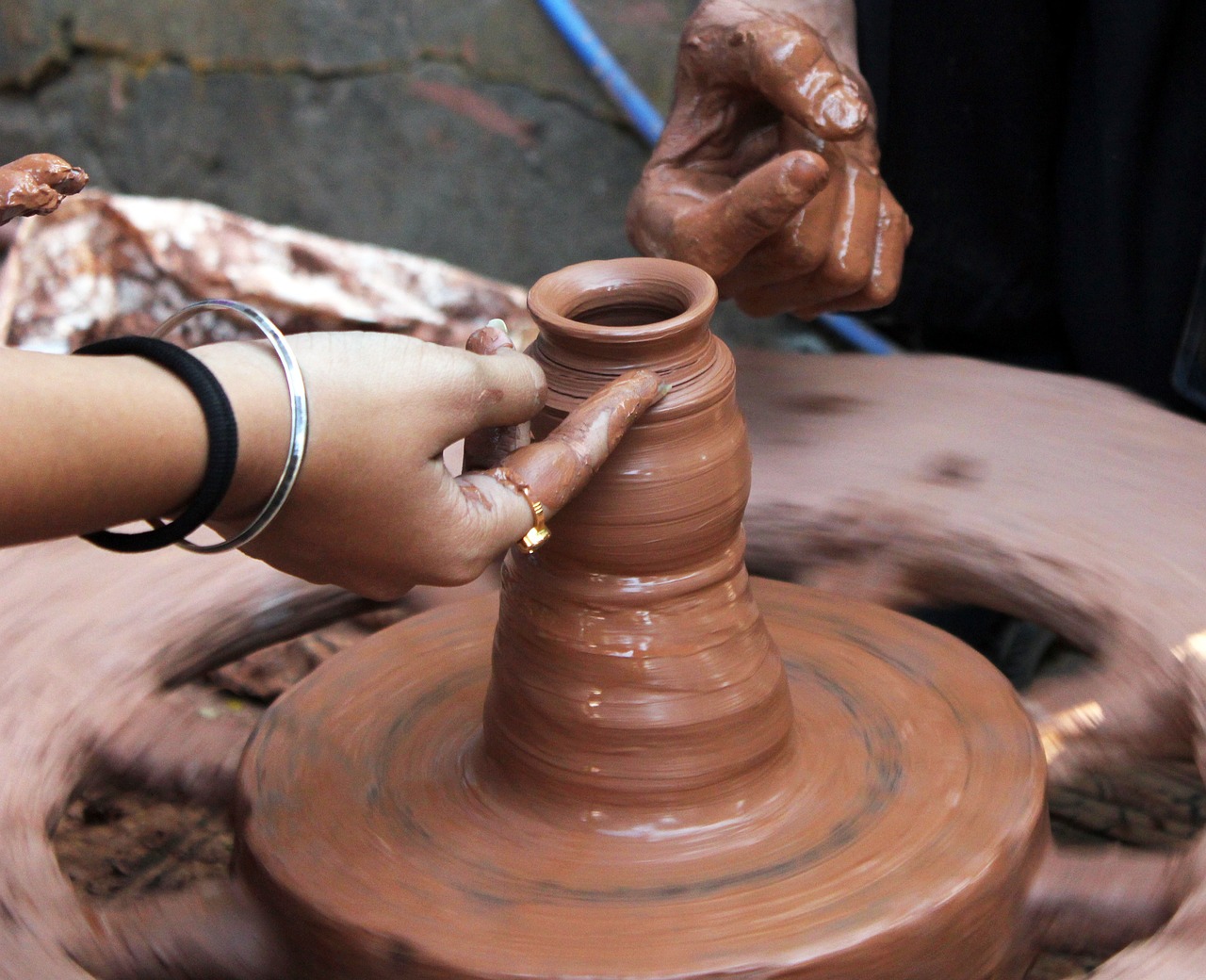
The History of Pottery
Pottery is one of the oldest human inventions, with a history that stretches back over 20,000 years. This ancient craft not only reflects the artistic sensibilities of various cultures but also serves as a testament to human ingenuity and adaptability. The earliest known pottery fragments were discovered in China, dating back to around 18,000 BCE, where they were likely used for cooking and storage. Can you imagine the first potter, hands covered in clay, shaping something from the earth that would serve a practical purpose for their community?
As civilizations evolved, so did pottery techniques and styles. The ancient Egyptians, for instance, produced beautifully decorated ceramics that often featured intricate designs and hieroglyphics. These pieces were not just functional; they were also ceremonial, used in rituals and as offerings to the gods. Similarly, the Greeks are renowned for their pottery, particularly the black-figure and red-figure techniques that adorned amphorae and vases, telling stories of their mythology and daily life.
Throughout history, pottery has played a crucial role in human development. It facilitated the storage of food and water, which was essential for the growth of settled communities. As people transitioned from nomadic lifestyles to agriculture, pottery became a cornerstone of domestic life. It was during this time that different regions began to develop unique styles and techniques, influenced by local resources and cultural practices. For example, in the Americas, Native American tribes created distinctive pottery that often featured symbolic designs and was made from locally sourced clay.
In the Middle Ages, pottery saw a significant transformation with the introduction of the potter's wheel in Europe. This innovation allowed for greater precision and uniformity in pottery shapes, leading to the creation of more elaborate and refined pieces. The Renaissance period further propelled pottery into the realm of high art, with artisans experimenting with glazes and decorative techniques, resulting in stunning works that were highly prized by the elite.
Today, pottery is not just a relic of the past; it is a dynamic art form that continues to evolve. Modern potters blend traditional methods with contemporary designs, creating pieces that resonate with both history and modern aesthetics. The resurgence of interest in handmade pottery reflects a broader cultural movement towards sustainability and craftsmanship, as people seek to connect with the tactile and the personal in an increasingly digital world.
In summary, the history of pottery is a fascinating journey through time, showcasing the creativity and resourcefulness of humanity. From ancient utilitarian vessels to modern art pieces, pottery has always been more than just clay; it embodies the stories, traditions, and innovations of the cultures that shaped it.
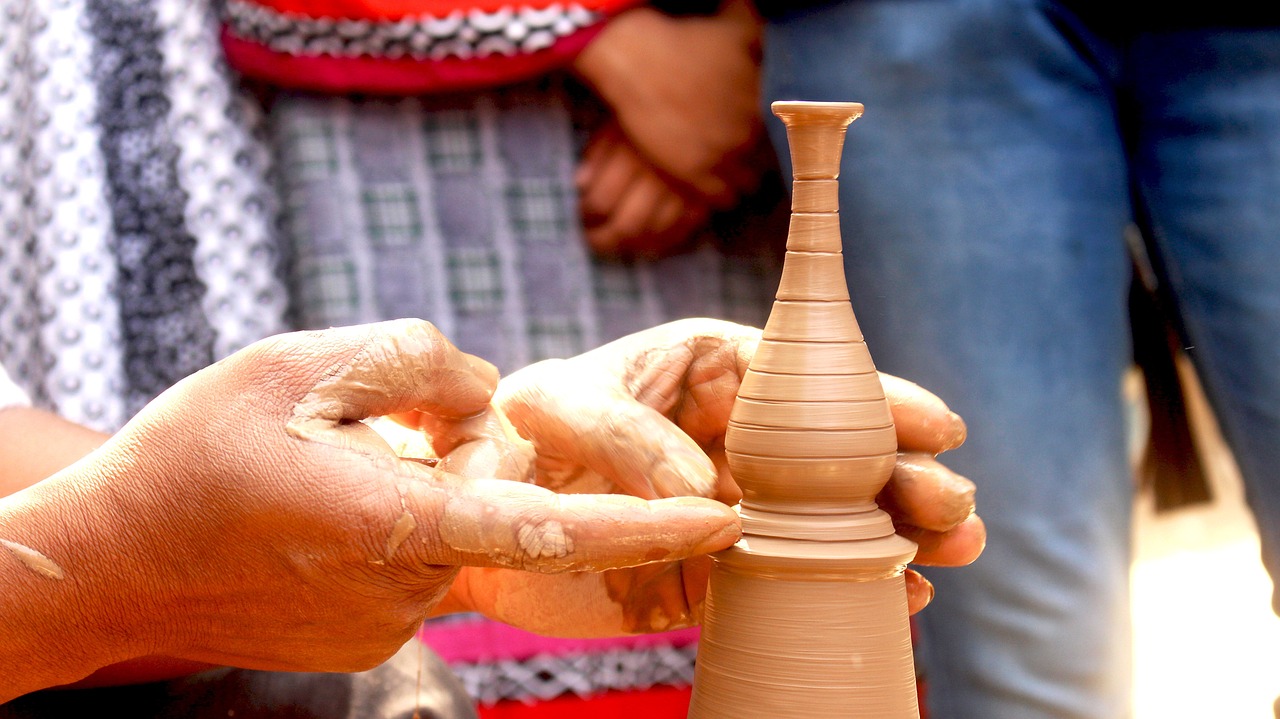
The Pottery Process
The journey of creating pottery is nothing short of magical. It begins with the humble clay, a natural material that has been shaped by the hands of artisans for millennia. To truly appreciate the beauty of pottery, one must understand the intricate process involved in transforming a lump of clay into a stunning work of art. This process can be broken down into several essential steps, each requiring skill, patience, and a bit of creativity.
First and foremost, the preparation of the clay is crucial. This involves kneading the clay to remove air bubbles and ensure a consistent texture. Think of it as preparing dough for baking; the smoother and more uniform the mixture, the better the final product will be. Once the clay is ready, it can be shaped using various techniques, such as wheel throwing or hand-building. Wheel throwing is like dancing with the clay, as the potter skillfully shapes the spinning mass into beautiful forms. In contrast, hand-building allows for more personal expressions, as artists can create unique pieces by molding the clay with their hands.
After shaping, the next step is drying. This is a critical phase where the clay must be allowed to dry slowly to prevent cracking. It’s during this time that the potter can refine the details, adding textures or designs that will enhance the final piece. Once the clay is leather-hard, it can be trimmed and further shaped, a stage that requires a delicate touch and an eye for detail.
Once the piece is fully dried, it enters the firing stage, which is where the magic truly happens. The first firing, known as bisque firing, transforms the clay into a hard, durable form. This process typically occurs in a kiln, where temperatures can soar to over 1,800 degrees Fahrenheit. Imagine the anticipation as the potter waits for the kiln to cool, revealing the transformed pieces inside. After bisque firing, the pottery is porous and ready for glazing.
Glazing is where color and personality come alive. Potters can choose from a variety of glazes, each offering a different finish and effect. Applying glaze is like painting a canvas; it adds depth and character to the piece. After glazing, the pottery undergoes a second firing, which vitrifies the glaze, making it glossy and water-resistant. This final firing is crucial, as it solidifies the artistry and craftsmanship that has gone into the piece.
To summarize the pottery process, here’s a simple table that outlines the main steps involved:
| Step | Description |
|---|---|
| Clay Preparation | Kneading and removing air bubbles to create a uniform texture. |
| Shaping | Using wheel throwing or hand-building techniques to form the clay. |
| Drying | Allowing the shaped clay to dry slowly to prevent cracking. |
| Bisque Firing | First firing to harden the clay in a kiln. |
| Glazing | Applying glaze to add color and finish to the pottery. |
| Final Firing | Second firing to vitrify the glaze and solidify the piece. |
Each step in this process is a testament to the potter's skill and dedication. From the initial kneading of the clay to the final firing, every moment is filled with anticipation and creativity. So, the next time you admire a piece of pottery, remember the intricate journey it undertook to become a work of art.
- What types of clay are best for beginners? Earthenware is often recommended for beginners due to its forgiving nature and vibrant colors.
- How long does it take to make pottery? The entire process can take anywhere from a few days to several weeks, depending on the complexity of the piece and drying times.
- Can pottery be made at home? Yes, with the right tools and materials, anyone can start making pottery at home!
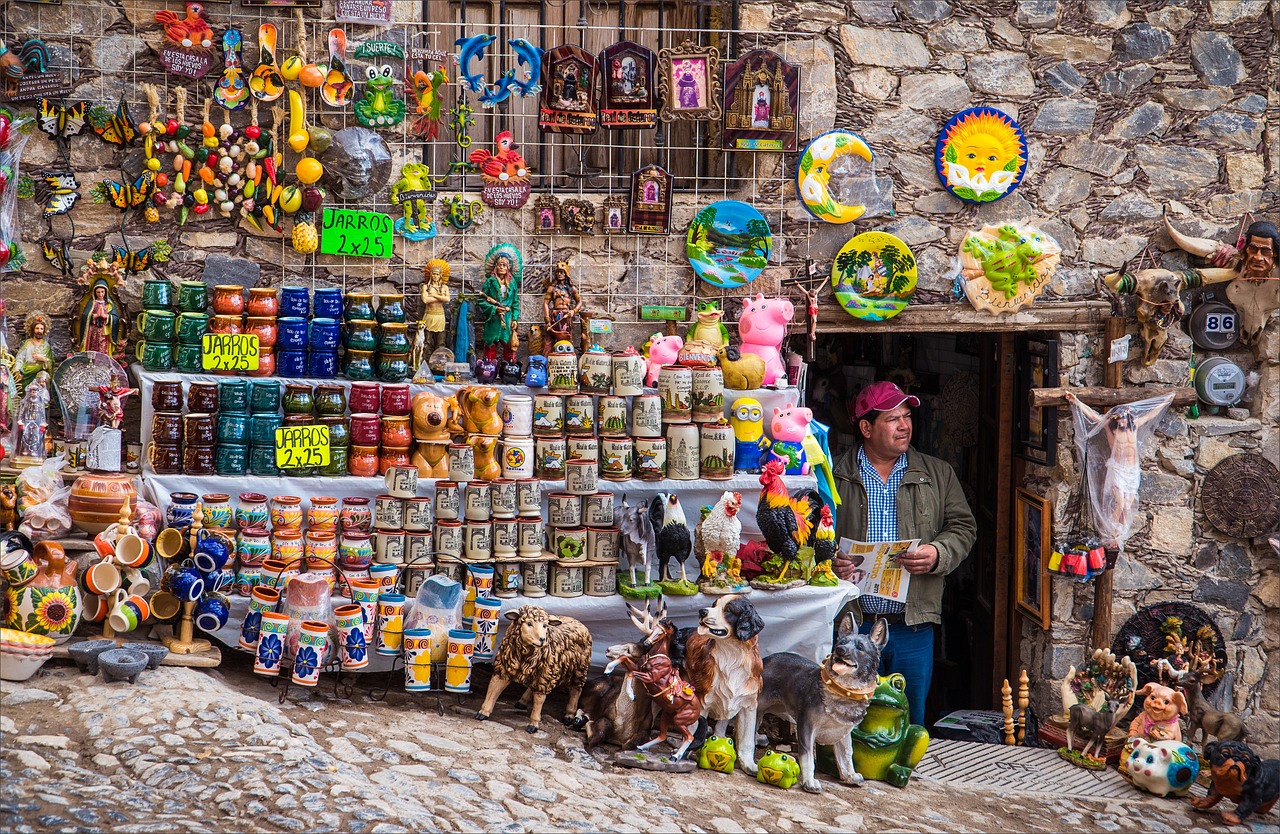
When it comes to pottery, the type of clay you choose can make all the difference in the world. Each type of clay has its own unique characteristics, which can influence not only the final appearance of your pottery but also the techniques you can use to create it. Let's dive into the three primary types of clay that every potter should know: earthenware, stoneware, and porcelain.
Earthenware is perhaps the most accessible type of clay and is often the first choice for beginners. Known for its porous nature, earthenware is typically fired at lower temperatures, which gives it a vibrant range of colors. This type of clay is perfect for creating decorative pieces and functional pottery like dishes and pots. The beauty of earthenware lies in its ability to absorb glazes beautifully, resulting in stunning finishes. However, due to its porous nature, it’s not always ideal for food storage unless properly glazed.
Next up is stoneware, a clay that is fired at much higher temperatures, making it incredibly durable and resistant to chipping. Stoneware is often used for both functional and artistic pottery, as it holds up well to daily use. Its earthy tones and smooth textures make it a favorite among potters looking to create robust kitchenware or striking sculptural pieces. One of the best features of stoneware is its ability to retain heat, making it a popular choice for baking dishes and serving ware.
Finally, we have porcelain, known as the "queen of clays." This type of clay is celebrated for its strength, translucence, and fine texture. Porcelain is fired at very high temperatures, resulting in a non-porous and highly durable finish. It’s often used for delicate items like fine china and intricate sculptures. The production of porcelain is a meticulous process, requiring skill and precision, which is why it’s often considered the pinnacle of ceramic artistry. Its ability to hold intricate details makes it a favorite for artists who want to push the boundaries of traditional pottery.
To summarize the differences among these types of clay, here’s a quick comparison:
| Type of Clay | Firing Temperature | Characteristics | Common Uses |
|---|---|---|---|
| Earthenware | Low | Porous, colorful | Decorative pieces, dishes |
| Stoneware | Medium to High | Durable, earthy tones | Kitchenware, functional pottery |
| Porcelain | High | Strong, translucent | Fine china, intricate sculptures |
Understanding the different types of clay is crucial for any aspiring potter. Each type brings its own set of challenges and rewards, allowing artists to express their creativity in unique ways. Whether you’re crafting a rustic earthenware bowl or a delicate porcelain vase, the type of clay you choose will shape your artistic journey.
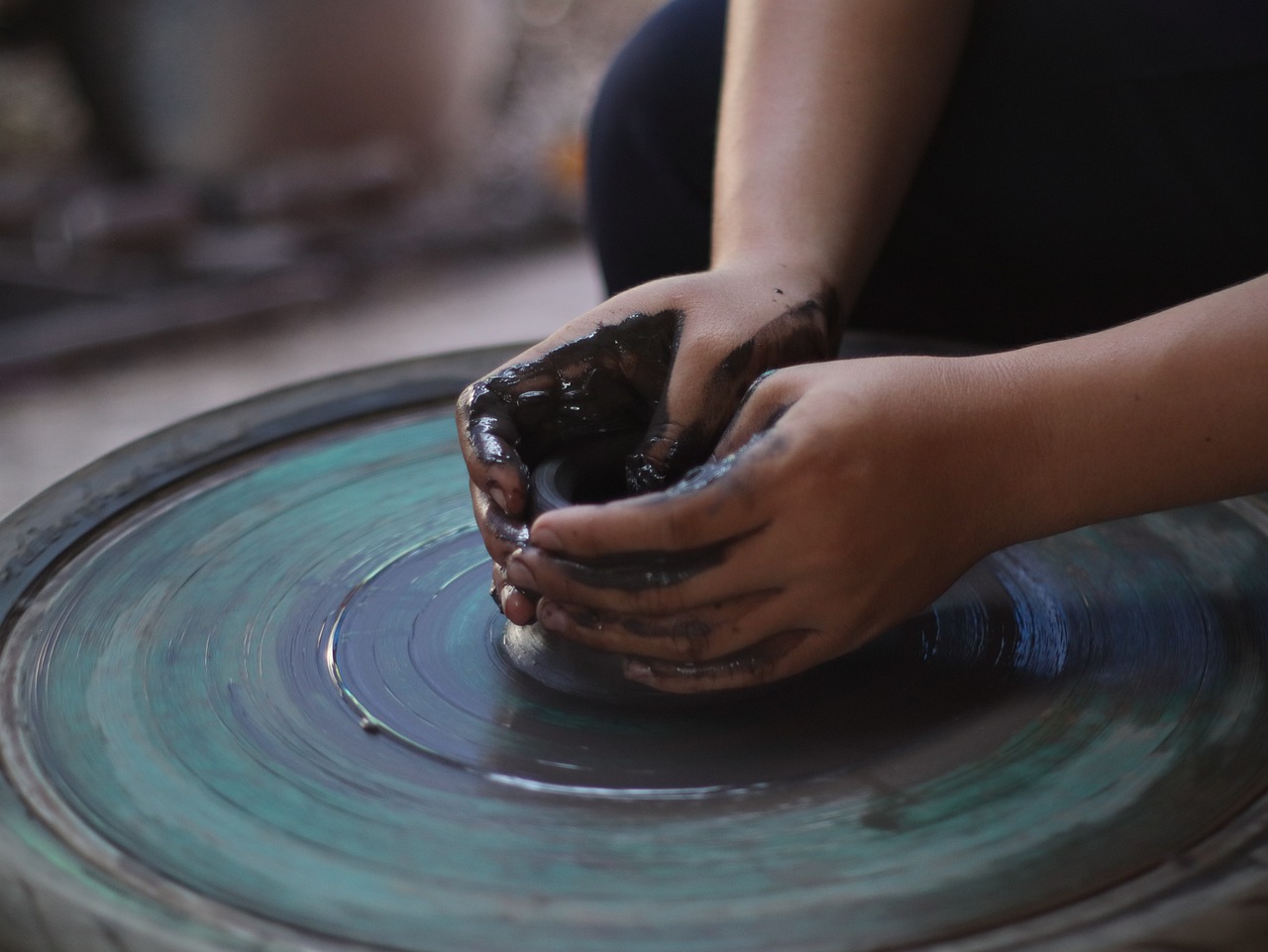
Earthenware
Earthenware is one of the oldest forms of pottery, known for its porous nature and vibrant colors. It is made from clay that is fired at relatively low temperatures, typically between 1,830°F and 2,200°F (1,000°C to 1,200°C). This firing process creates a material that is not only beautiful but also practical for various uses. The charm of earthenware lies in its ability to absorb moisture, which can enhance the flavors of food when used in cooking or serving. Imagine a delicious stew simmering in an earthenware pot, the clay subtly infusing it with a rustic taste that metal or glass simply cannot replicate!
One of the most appealing aspects of earthenware is its colorful glazes. Artists often use bright, bold colors to decorate their pieces, making earthenware a favorite for both functional and decorative items. From terracotta pots to intricate dinnerware, the possibilities are endless. The glazing process not only adds aesthetic value but also helps to seal the porous surface, making it more durable for everyday use. However, it’s important to note that not all earthenware is suitable for food use unless it is properly glazed.
When it comes to shaping earthenware, artists employ various techniques, including:
- Hand-building: This method involves shaping the clay by hand without the use of a potter's wheel. It's a fantastic way for beginners to get started and allows for unique, one-of-a-kind creations.
- Wheel throwing: For those who seek precision and symmetry, wheel throwing is the way to go. It requires skill and practice but can produce stunning results.
- Slip casting: This technique uses liquid clay (slip) poured into molds, allowing for intricate designs and uniform shapes.
In addition to these techniques, earthenware is often adorned with various decorative elements. Artists might carve, stamp, or paint designs onto the surface of the clay before it is fired. This level of customization allows potters to express their personal style and creativity, making each piece truly unique. Whether you're looking for a simple flower pot or an elaborate serving dish, earthenware offers a wide range of options that can fit any aesthetic.
Overall, earthenware is more than just a medium; it's a canvas for creativity and a bridge to the past. Its rich history and versatility make it a beloved choice among potters and collectors alike. So, next time you admire a beautifully crafted earthenware piece, take a moment to appreciate the skill and tradition that went into creating it!
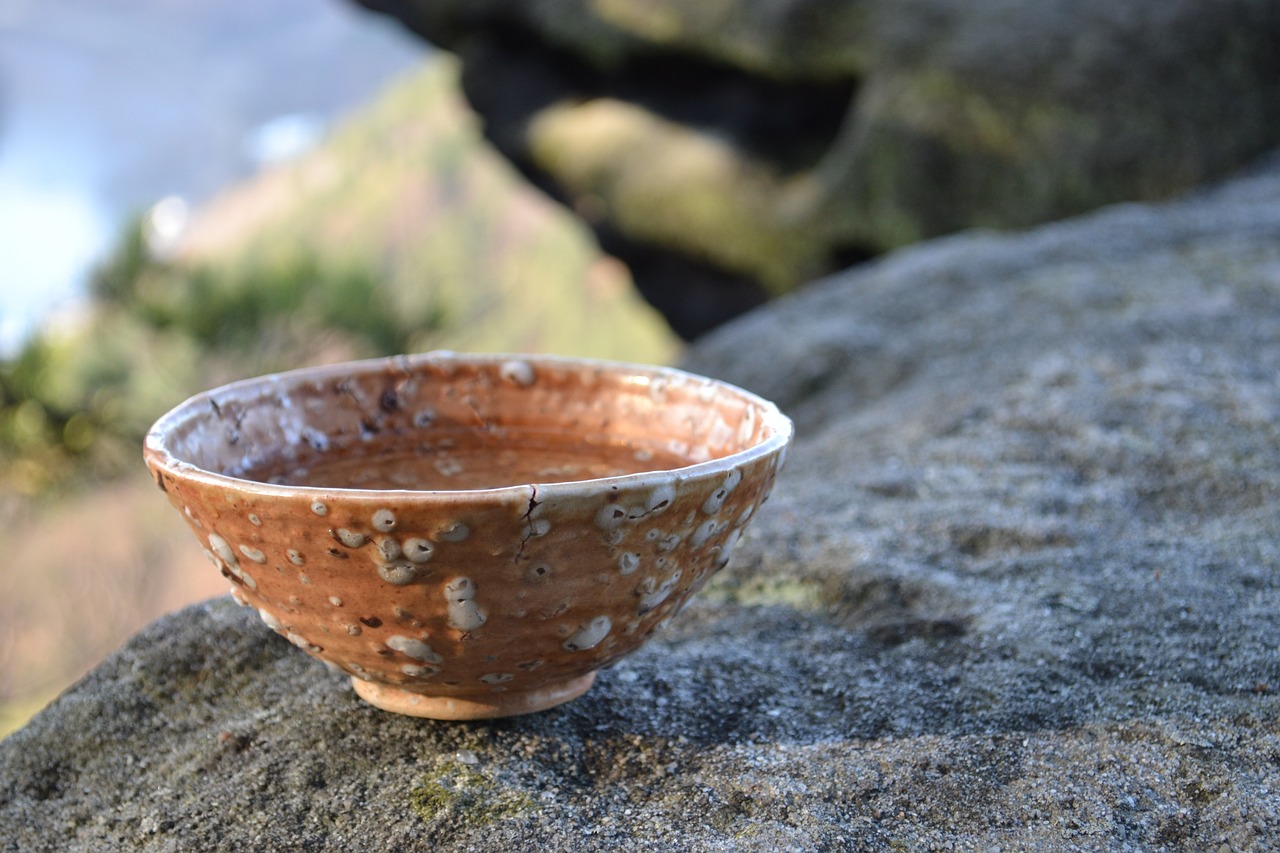
Porcelain
When we think of , we often picture delicate, elegant pieces that grace the tables of the elite or the shelves of art collectors. But the story of porcelain is much more than just aesthetics; it is a tale of innovation, artistry, and cultural significance. Originating in China during the Tang Dynasty (618-907 AD), porcelain was initially a closely guarded secret, treasured for its beauty and durability. The term itself comes from the Italian word 'porcellana,' which means cowrie shell, due to its smooth, shiny surface that resembles the shell's luster.
One of the most fascinating aspects of porcelain is its unique composition. Unlike other types of clay, porcelain is made from a specific combination of kaolin (a type of clay), feldspar, and quartz. This blend is what gives porcelain its characteristic strength and translucence, making it a favorite among potters and artists alike. The firing process, which occurs at higher temperatures than other ceramics, further enhances these properties, resulting in a material that is not only beautiful but also incredibly durable.
Porcelain can be categorized into several types, each with its own unique qualities. For example:
- Bone China: Known for its high levels of whiteness and translucency, bone china incorporates bone ash into its mixture, giving it a unique softness and strength.
- Hard-Paste Porcelain: This type is made from kaolin and petuntse and is fired at high temperatures, resulting in a very hard and durable final product.
- Soft-Paste Porcelain: This version is made with a mixture of clay and other materials, allowing for more intricate designs but is less durable than hard-paste.
Creating porcelain pieces requires a high level of skill and precision. The potter must carefully shape the clay, often using a wheel to achieve the desired form. Once shaped, the piece is dried and then fired in a kiln at temperatures ranging from 1,200°C to 1,400°C. This process not only hardens the clay but also vitrifies it, meaning it becomes glass-like and impermeable to water. After the initial firing, the porcelain can be glazed and fired again, allowing for a variety of finishes and colors.
Porcelain has been used in various applications throughout history, from tableware and decorative items to intricate sculptures and tiles. Its versatility and beauty have made it a staple in both functional and artistic realms. In modern times, artisans continue to push the boundaries of porcelain, experimenting with new techniques and designs that challenge traditional notions of what porcelain can be.
In conclusion, porcelain is more than just a material; it is a canvas for creativity, a testament to human ingenuity, and a bridge between cultures. Whether you’re sipping tea from a fine china cup or admiring a porcelain sculpture in a gallery, you’re experiencing the magic of this remarkable medium.
1. What is the main difference between porcelain and other types of ceramics?
The main difference lies in the composition and firing temperature. Porcelain is made from a specific blend of kaolin, feldspar, and quartz, and is fired at much higher temperatures than earthenware or stoneware, resulting in its unique strength and translucence.
2. Can porcelain be used in the microwave?
Most porcelain is microwave-safe, but it's always best to check for any specific manufacturer guidelines. Avoid using pieces with metallic decorations in the microwave.
3. How do I care for porcelain items?
Porcelain is generally easy to care for. Hand washing is recommended to preserve the finish, but many pieces are also dishwasher-safe. Avoid sudden temperature changes to prevent cracking.
4. Is porcelain more expensive than other ceramics?
Due to the complex manufacturing process and the quality of materials used, porcelain can be more expensive than earthenware or stoneware. However, prices can vary widely based on brand and craftsmanship.
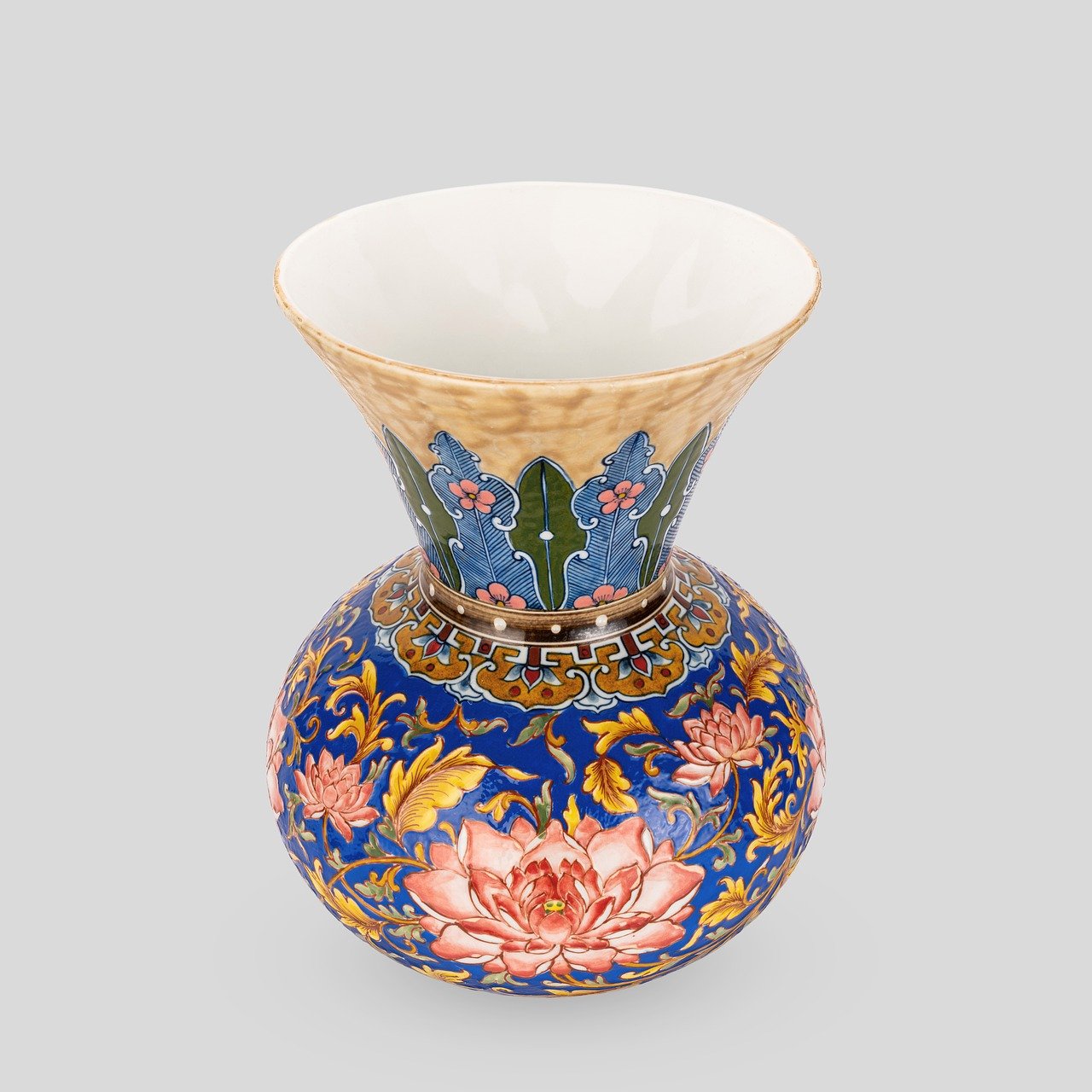
Techniques in Pottery
Pottery is a fascinating art form that allows for a plethora of creative expressions, and the techniques employed in its creation are as diverse as the artists themselves. Each technique not only influences the final product but also reflects the personality and style of the potter. Whether you're a novice or a seasoned artisan, understanding these techniques can elevate your pottery game to new heights. So, what are the main techniques used in pottery? Let’s dive in!
One of the most popular methods is wheel throwing. This technique involves using a potter's wheel to shape the clay into various forms. As the wheel spins, the potter applies pressure with their hands to mold the clay into beautiful vessels. The sensation of the clay spinning beneath your fingers is nothing short of magical. It’s like dancing with the clay, where every twist and turn creates a unique masterpiece. However, mastering this technique requires practice and a keen sense of balance.
Another widely used technique is hand-building. This approach is particularly appealing for those who enjoy a more tactile experience. Instead of relying on a wheel, potters use their hands to pinch, coil, or slab-build their creations. Each method has its charm:
- Pinching: This technique involves using your thumb and fingers to pinch the clay into shape, allowing for organic forms that often have a rustic feel.
- Coiling: Here, long rolls of clay are stacked and blended together, creating larger and more intricate designs.
- Slab-building: In this method, flat pieces of clay are cut and assembled to form geometric shapes. It’s perfect for creating boxes, plates, or architectural pieces.
Each of these hand-building methods offers a unique way to connect with the clay, allowing for a more personal touch in every piece. If you’ve ever felt the urge to create something truly one-of-a-kind, hand-building might just be your calling.
Once the basic shape is formed, the next step is often glazing. This technique involves applying a mixture of minerals and water to the surface of the pottery. Glazing not only adds color and texture but also provides a protective layer to the finished piece. The beauty of glazing lies in its unpredictability; each firing can yield surprising results, making every piece a delightful surprise. Potters can experiment with different glaze combinations to achieve stunning effects, from glossy finishes to matte surfaces.
In addition to these primary techniques, potters often employ specialized methods such as sculpting and surface decoration. Sculpting allows for more artistic freedom, enabling potters to create intricate designs and figures that tell a story. Surface decoration techniques, such as carving, stamping, and painting, can transform a simple pot into a canvas of artistry. The possibilities are endless, and this is where the potter’s imagination truly shines.
In conclusion, the techniques in pottery are as varied as the artists who practice them. Each method offers a unique way to express creativity and connect with the material. Whether you prefer the precision of wheel throwing or the organic nature of hand-building, there’s a technique that resonates with every potter. So grab some clay, unleash your creativity, and let the magic of pottery take you on a journey of self-expression!
Q: What is the best technique for beginners?
A: Hand-building techniques are often recommended for beginners as they allow for more freedom and less reliance on tools.
Q: How long does it take to learn pottery?
A: It varies by individual, but with consistent practice, many people start to feel comfortable with basic techniques within a few weeks.
Q: Can I use any type of clay for all pottery techniques?
A: Not all clays are suitable for every technique. It's essential to choose the right type of clay for your specific method to achieve the best results.
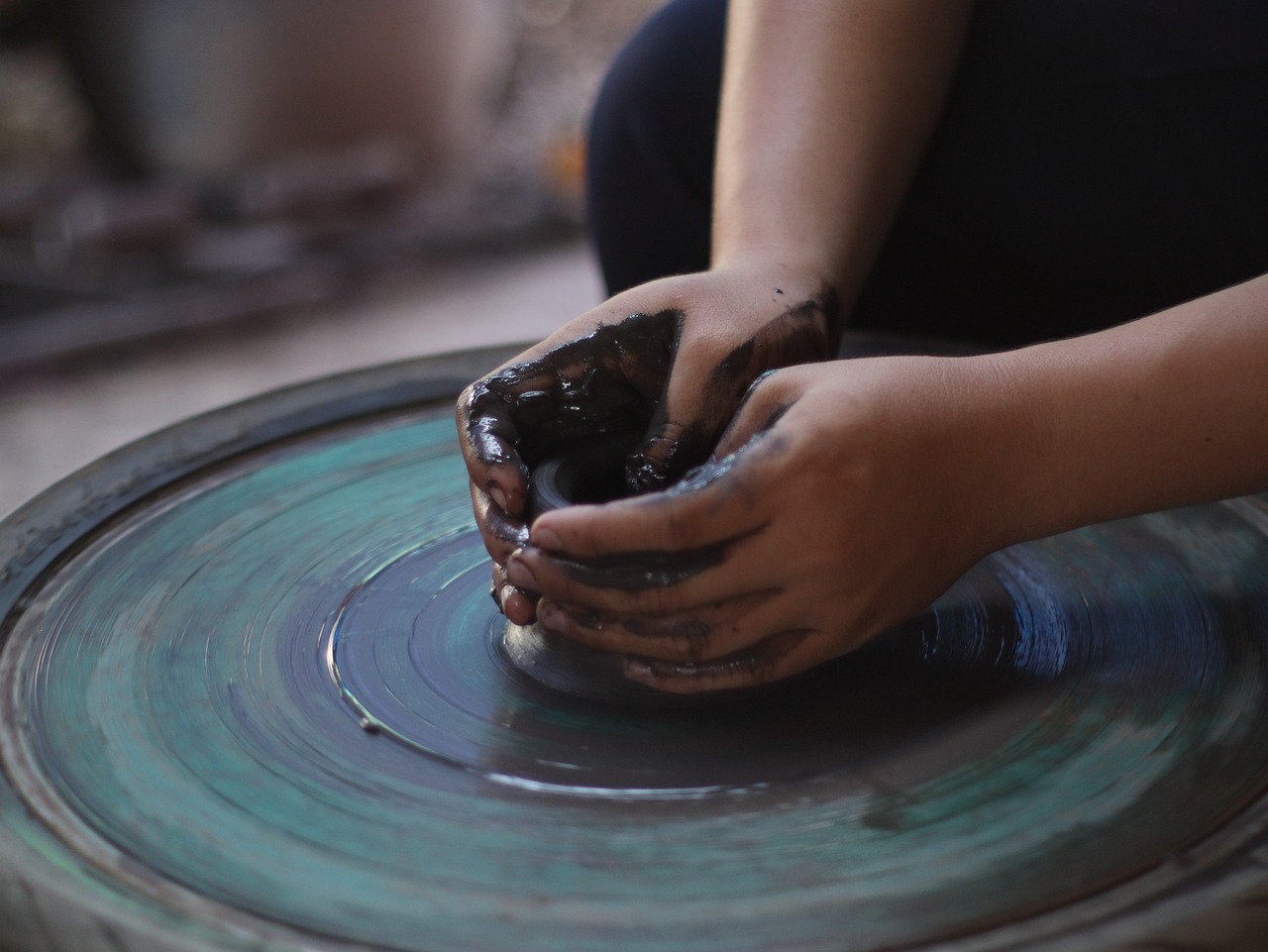
The Therapeutic Benefits of Pottery
Pottery is more than just an art form; it’s a transformative experience that can significantly enhance mental and emotional well-being. Imagine sitting at a potter's wheel, your hands immersed in soft clay, allowing your thoughts to drift away as you focus solely on shaping your creation. This act of molding clay can be incredibly therapeutic, providing a sense of calm and clarity that many people seek in their busy lives.
Engaging with pottery encourages a state of mindfulness. When you work with clay, you are in the moment, fully immersed in the tactile experience. This practice can help reduce anxiety and promote relaxation, similar to how meditation works. Just as a sculptor chisels away at stone to reveal beauty, working with clay allows individuals to chip away at their stress, uncovering a sense of peace within themselves.
Moreover, pottery offers a unique outlet for self-expression. Each piece created is a reflection of the artist’s emotions and thoughts. Whether you’re crafting a simple bowl or an intricate vase, the act of creation becomes a personal journey. This can be especially beneficial for those who may struggle to express their feelings verbally. Through pottery, one can channel emotions into tangible forms, fostering a sense of accomplishment and pride.
Additionally, pottery can serve as a powerful social connector. Participating in pottery classes or workshops allows individuals to meet like-minded people, creating a supportive community. Sharing experiences and learning from one another can enhance feelings of belonging and reduce feelings of isolation. In a world where digital interactions often replace face-to-face connections, pottery brings people together in a meaningful way.
Research has shown that engaging in creative activities like pottery can lead to improved mental health. According to various studies, individuals who participate in arts and crafts report lower levels of stress and anxiety. The repetitive motions involved in shaping clay can also have a meditative effect, promoting a sense of tranquility. Here’s a brief overview of some therapeutic benefits of pottery:
| Benefit | Description |
|---|---|
| Stress Relief | Working with clay can reduce stress levels by promoting relaxation and mindfulness. |
| Emotional Expression | Pottery allows individuals to express their emotions creatively, providing a sense of release. |
| Social Interaction | Classes and workshops foster community and connection among participants. |
| Increased Focus | Focusing on the pottery process can improve concentration and mental clarity. |
In conclusion, the therapeutic benefits of pottery extend far beyond the physical act of creating. It is a holistic practice that nurtures the mind, body, and spirit. So, if you’re looking for a way to unwind, express yourself, or connect with others, consider picking up some clay and giving pottery a try. You might just find that the magic of pottery can lead to profound personal growth and healing.
- What materials do I need to start pottery? You will need clay, tools for shaping, a kiln for firing, and glazes for finishing your pieces.
- Is pottery suitable for beginners? Absolutely! Many pottery classes cater to beginners, providing a supportive environment to learn.
- How does pottery help reduce stress? The tactile nature of working with clay promotes mindfulness, allowing individuals to focus and relax.
- Can pottery be a form of therapy? Yes, many therapists incorporate pottery into their practice as a way to help clients express emotions and reduce anxiety.
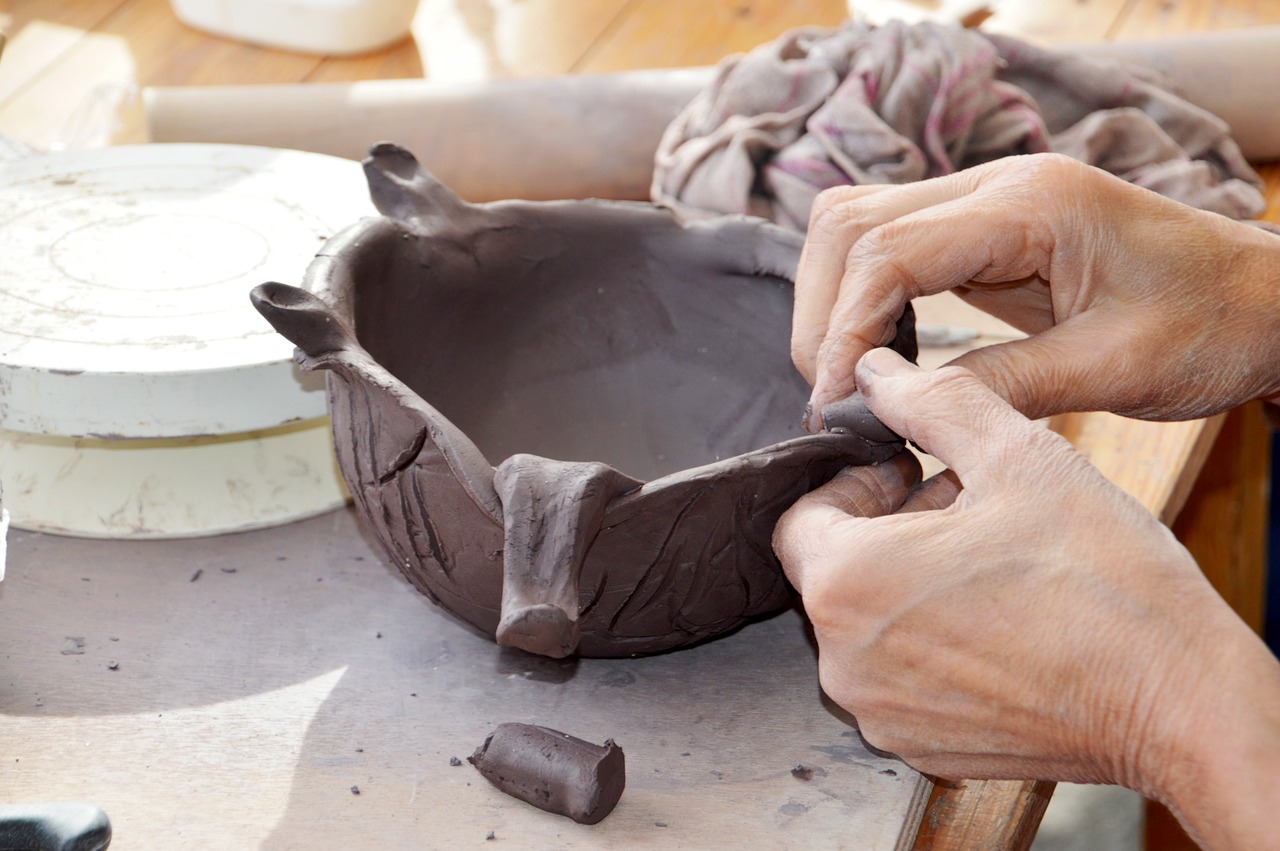
Pottery in Modern Culture
In today's fast-paced world, where technology often dominates our lives, pottery emerges as a refreshing and tangible art form that connects us to our roots. This ancient craft has seen a remarkable resurgence in popularity, appealing to both seasoned artisans and curious newcomers alike. The charm of pottery lies not only in its aesthetic appeal but also in its ability to foster community and creativity. Have you ever thought about how something as simple as a clay pot can bring people together? It’s fascinating!
Modern pottery is not just about creating functional items; it’s a vibrant expression of personal and cultural identity. Many artists use their work to comment on contemporary issues, blending traditional techniques with modern aesthetics. For instance, you might find pottery that incorporates recycled materials or reflects themes of sustainability. This melding of old and new not only preserves the craft but also makes it relevant in today's society.
Moreover, pottery studios have become hubs of creativity and social interaction. These spaces often host workshops, classes, and events that encourage collaboration among artists and enthusiasts. Imagine a room filled with laughter, the sound of wheels spinning, and the scent of wet clay—it’s a sensory experience that fosters connections. Community members come together, share techniques, and inspire one another, creating an environment where creativity flourishes.
Here are some ways pottery is influencing modern culture:
- Artistic Expression: Artists are pushing the boundaries of traditional pottery, experimenting with shapes, glazes, and firing techniques to create unique pieces that speak to contemporary themes.
- Therapeutic Spaces: Many pottery studios emphasize the therapeutic benefits of working with clay, offering classes that focus on mindfulness and relaxation, drawing in people seeking stress relief.
- Social Engagement: Pottery workshops often bring together diverse groups, encouraging collaboration and fostering friendships through shared creative experiences.
Additionally, social media has played a pivotal role in the revival of pottery. Platforms like Instagram and Pinterest are flooded with stunning images of ceramic art, inspiring countless individuals to pick up their tools and start creating. The accessibility of online tutorials and virtual classes has democratized pottery, making it easier than ever for anyone to dive into this enriching craft.
In essence, pottery in modern culture is a beautiful blend of tradition and innovation. It serves as a reminder that even in our digital age, there is immense value in creating something with our hands. Whether you’re a novice or a seasoned potter, the act of shaping clay can be profoundly fulfilling and can lead to unexpected friendships and collaborations. So, why not give it a try? Who knows what connections you might forge through the magic of pottery!
- What materials do I need to start pottery?
To begin your pottery journey, you'll need basic materials such as clay, a pottery wheel (if you're throwing), tools for shaping and trimming, and a kiln for firing your pieces. Many studios provide these materials for beginners!
- Is pottery a good stress reliever?
Absolutely! Working with clay can be incredibly therapeutic. The tactile nature of clay and the focus required can help you unwind and escape from daily stressors.
- Can I sell my pottery?
Yes! Many potters sell their creations at local markets, online platforms, or through galleries. As you develop your skills, consider showcasing your work to share your passion with others.
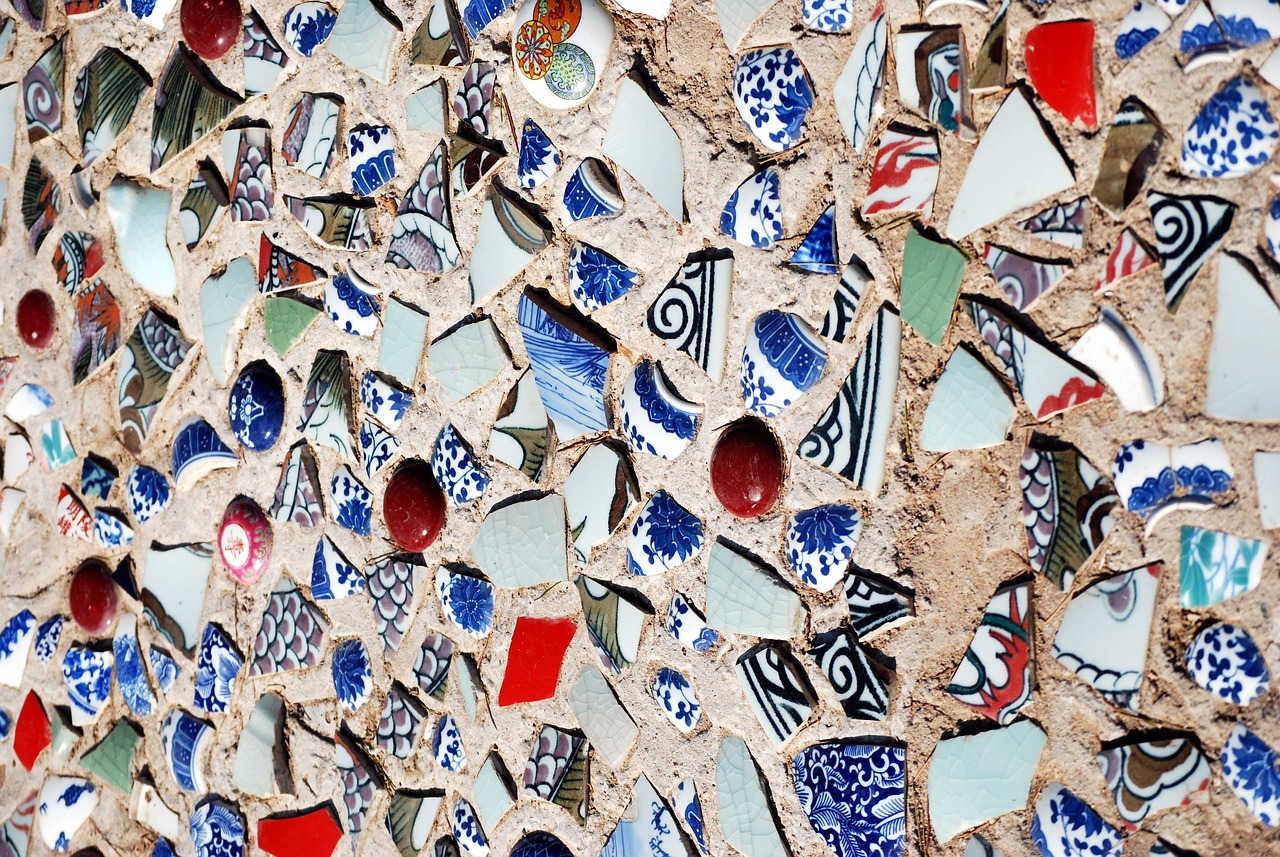
Connecting Through Pottery
Pottery is more than just a solitary hobby; it’s a gateway to connection, a medium through which people can come together, share experiences, and build lasting friendships. Imagine stepping into a pottery studio, the air filled with the earthy aroma of wet clay, and the sound of laughter echoing off the walls. This vibrant atmosphere is a testament to how pottery can foster a sense of community.
One of the most significant ways pottery connects people is through workshops and classes. These settings provide a relaxed environment where individuals can learn the art of pottery while mingling with others who share similar interests. Through hands-on experience, participants not only gain new skills but also create bonds over shared challenges and triumphs. When someone struggles to center their clay on the wheel or finds the perfect glaze, they often find camaraderie in their fellow potters, leading to friendships that extend beyond the studio.
Moreover, pottery can serve as a collaborative art form. Many studios host group projects where participants work together to create larger pieces or installations. This teamwork encourages communication and cooperation, as everyone contributes their unique touch to the final product. Such collaborative efforts can lead to a profound sense of achievement and belonging, reinforcing the idea that art is best enjoyed when shared.
In addition to workshops, community events centered around pottery can be incredibly enriching. Local pottery fairs, exhibitions, and markets offer a platform for artisans to showcase their work while allowing visitors to engage with the artists themselves. These events often feature demonstrations, where attendees can witness the magic of pottery-making firsthand. This interaction not only educates the public about the craft but also creates a sense of appreciation for the hard work and creativity involved in each piece.
Furthermore, pottery can be a therapeutic outlet, allowing individuals to express their emotions and experiences through their creations. This form of expression often sparks conversations, as people share the stories behind their work. The act of shaping clay can be a metaphor for shaping one’s life, and discussing these experiences can lead to deep, meaningful connections. As participants share their journeys, they often find that they are not alone in their struggles, fostering a sense of community and support.
In conclusion, pottery is a beautiful art form that extends beyond the creation of tangible objects. It is a means of connecting with others, sharing experiences, and building a supportive community. Whether through workshops, collaborative projects, or community events, the bonds formed through pottery can be as lasting as the pieces created. So, why not grab some clay, join a class, and see where this magical journey can take you?
- What are the benefits of taking pottery classes?
Pottery classes offer numerous benefits including skill development, stress relief, and the opportunity to meet new people. - Can pottery be a form of therapy?
Yes! Working with clay can enhance mindfulness, reduce anxiety, and provide a creative outlet for emotions. - How can I find local pottery workshops?
Check community centers, local art studios, or online platforms that list classes in your area.
Frequently Asked Questions
- What is pottery?
Pottery is the art of shaping and firing clay to create functional or decorative objects. It has been practiced for thousands of years, evolving into various styles and techniques across different cultures.
- What are the different types of clay used in pottery?
There are several types of clay used in pottery, including earthenware, stoneware, and porcelain. Each type has unique properties: earthenware is porous and colorful, stoneware is durable and non-porous, while porcelain is known for its strength and translucence.
- How is pottery made?
The pottery-making process involves several steps: preparing the clay, shaping it through methods like wheel throwing or hand-building, drying, and finally firing it in a kiln to harden the piece. Glazing is often done afterward to add color and finish.
- What are the therapeutic benefits of pottery?
Working with clay can be incredibly therapeutic. It helps reduce stress, enhances mindfulness, and fosters emotional well-being by allowing individuals to express themselves creatively and engage in a meditative process.
- Is pottery a popular hobby today?
Absolutely! Pottery has seen a resurgence in popularity in recent years. Many people are drawn to pottery studios and classes, finding joy in creating handmade items and connecting with others through this timeless craft.
- Can pottery help build community?
Yes! Pottery can create strong bonds between individuals and communities. Workshops and collaborative projects encourage social interaction and shared creativity, making it a wonderful way to meet new people and forge lasting connections.
- What tools do I need to start pottery?
To begin your pottery journey, you'll need some basic tools such as a pottery wheel (if you plan to throw), hand tools for shaping, sponges, and a kiln for firing your pieces. Many studios provide tools for beginners, so you can start experimenting without a large initial investment.



















